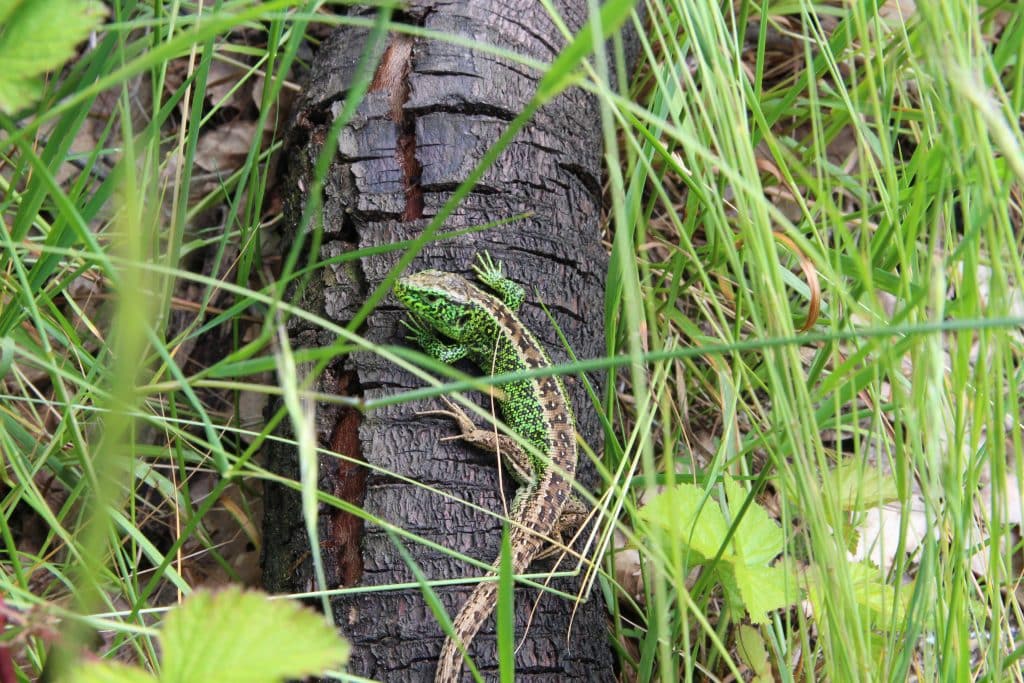High from the air, drones help survey sand lizard habitat
Understanding the space use and habitat needs of animals is essential for effective species conservation. Small animals use small structures that are difficult to monitor. LIB researchers have now used drones in a study to depict these small structures in high-resolution habitat maps. The research team was able to show how important low blackberry bushes are for sand lizards in the Dellbrücker Heide in Cologne. The drone method can find application in nature conservation and landscape planning.
“What is their neighborhood or quarter for people is their home range for wild animals,” explains Dr. Dennis Rödder, curator of Herpetology section at the Leibniz Institute for the Analysis of Biodiversity Change (LIB) in Bonn. This area is familiar to them, it’s where they move around and it fulfills their ecological needs in their daily lives, from food to shelter. After exploring the surrounding area, the animals usually return to this area. Therefore, mapping the habitat in the home range can provide valuable insights into the spatial and structural needs of wildlife. Understanding these requirements is becoming increasingly important as human impacts alter landscapes. “We hope that our work will not only remain theoretical but will also find application in conservation and landscape planning,” explains Vic Clement, PhD student at the LIB.
Sand lizards and their home range are small, as are the structures in their habitat. High-resolution maps depicting individual bushes, grass, sand or trees are therefore required for monitoring. Drones provide a remedy here: from a low altitude, they take high-resolution images of the area so that individual structures can be easily distinguished. The LIB researchers now merged the observed home ranges of the animals studied with the detailed map and were thus able to examine the structure of the habitat within the boundaries of the home range and compare it with the surrounding area. Clement, Schluckebier, and Rödder demonstrated that sand lizards in the Dellbrücker Heide favor low brambles, while avoiding open sandy areas and high vegetation. Preferences for grass and other low bushes, on the other hand, vary from animal to animal.
“The sand lizard as a cultural successor is often a victim of disturbance, destruction, or fragmentation of its habitats by human activities. Compensatory and protective management could now be better formulated with our data,” also hopes Rieke Schluckebier, Master’s candidate in the Herpetology section of the LIB. In recent years, drones have increasingly proven to be a useful tool for answering ecological questions. This time-efficient method of surveying habitat structures can be of great benefit in the management of protected areas.
Source
Clement, V.F., R. Schluckebier, & D. Rödder (2022). About lizards and unmanned aerial vehicles: assessing home range and habitat selection in Lacerta agilis. Salamandra, 58: 24–42.
https://www.salamandra-journal.com/index.php/home/contents/2069-clement-v-f-r-schluckebier-d-roedder






